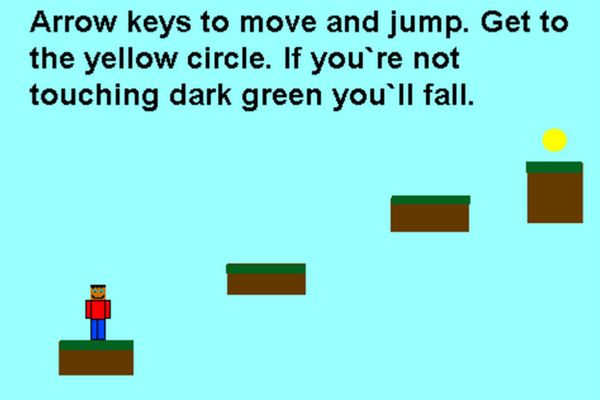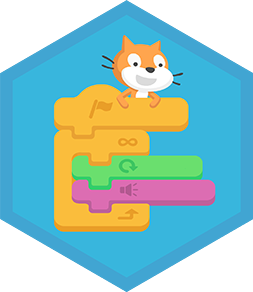Use Scratch to make an interactive game
Create an interactive Scratch game with sprites, sound, scoring, and levels; program movement, collisions, and win conditions while learning basic coding.



Step-by-step guide to create an interactive Scratch game
How to Make a Jumping Game in Scratch | Tutorial
Step 1
Open Scratch and start a new project by clicking "Create" so you have a blank game to build.
Step 2
Remove the default cat sprite if you don't want it by selecting it and clicking the delete icon.
Step 3
Add a player sprite from the Scratch library or paint your own so you have something to control.
Step 4
Add an enemy or target sprite from the library so the player has something to interact with.
Step 5
Make a Score variable by clicking "Variables" then "Make a Variable" and name it "Score" so you can track points.
Step 6
Add code to the player sprite so arrow keys move it using "when green flag clicked" then a "forever" block with "if key pressed" blocks that change x and y.
Step 7
Add code to the enemy sprite so it moves by using "when green flag clicked" then "forever" and a "glide to x y" or "go to random position" block to make it move.
Step 8
Program collision detection on the player sprite by adding a script that says "if touching [enemy] then change Score by 1 and play sound" so points increase when they touch.
Step 9
At the start of the game set Score to 0 with a "when green flag clicked" and "set Score to 0" block so scoring begins fresh each time.
Step 10
Create a Level variable and add code to increase Level when Score reaches a target (for example change Level by 1 when Score = 5) so the game gets harder.
Step 11
Make the game harder when Level changes by adding scripts that increase enemy speed or add another enemy when Level goes up.
Step 12
Add a win condition by making code that checks "if Level = 3 then broadcast 'You Win' and stop other scripts" so the game ends with a victory.
Step 13
Click the green flag to playtest your game and note any changes to make controls smoother or collisions fairer.
Step 14
Tweak sprites speeds sounds and positions until the game feels fun and fair for you.
Step 15
Share your finished game on DIY.org so other kids can see and try your interactive Scratch game.
Final steps
You're almost there! Complete all the steps, bring your creation to life, post it, and conquer the challenge!


Help!?
I can't access Scratch online or can't find a sprite or sound in the library—what can I use instead?
Use the free Scratch Desktop app to 'Open Scratch and start a new project,' paint your own sprites with the 'paint your own' option, and record or import sounds from your computer instead of relying on the online library or DIY.org.
My player won't move or touching the enemy doesn't change the score—what should I check?
Make sure your player has the 'when green flag clicked' plus 'forever' and the correct 'if key pressed' blocks attached, that the stage is clicked so arrow keys have focus, and that the 'if touching [enemy]' block uses the exact enemy sprite name and you have 'set Score to 0' under the green flag to reset scoring before testing.
How can I adapt this Scratch game for younger children or make it more challenging for older kids?
For younger kids simplify controls by keeping only one or two arrow keys, larger sprites, slower enemy movement and remove the Level variable, while older kids can add cloning to spawn more enemies, increase Level targets, and add broadcasts like 'You Win' to expand gameplay complexity.
What are some ways to extend or personalize the game after the basic version is working?
Paint custom player and enemy sprites, record unique sounds for the 'play sound' block, add power-up sprites that change Score or give temporary invincibility, increase enemy speed when Level changes, or implement cloud variables for leaderboards before sharing on DIY.org.
Watch videos on how to create an interactive Scratch game
How to Make a Catch Game in Scratch | Tutorial
Facts about Scratch programming for kids
🧩 Millions of young creators use Scratch to build games, stories, and animations around the world.
🔍 Scratch includes a built-in "touching" block so you can detect collisions without complex math.
🐱 Scratch was launched in 2007 by the MIT Media Lab to help kids learn coding with colorful blocks.
🚦 Simple levels can be made by increasing a "level" variable, speeding up enemies, or adding new obstacles as players advance.
🎭 Sprites can have multiple "costumes" so one character can change appearance or play simple animations.
How do I make an interactive Scratch game with sprites, sound, scoring, and levels?
What materials do I need to create a Scratch game?
What ages is this Scratch game activity suitable for?
What are the benefits of making a Scratch game with my child?


One subscription, many ways to play and learn.
Only $6.99 after trial. No credit card required



